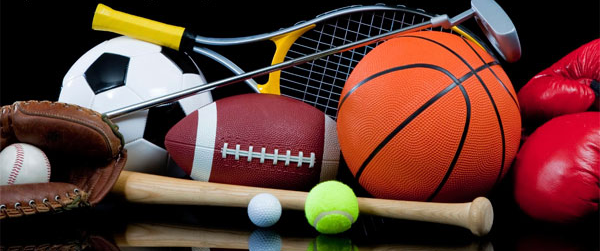Floyd v. NCAA and Division I Conferences: Antitrust Lawsuit Filed in Minnesota
May 2, 2014THE NCAA COMMITTEE ON INFRACTIONS HAS SPOKEN: UNIVERSITY OF ALASKA, ANCHORAGE (DIVISION II)
May 8, 2014Marucci Sports, LLC (“Marucci”) filed suit against the National Collegiate Athletic Association (“NCAA”) and National Federation of State High School Associations (“NFHS”) alleging that the NCAA and NFHS imposed a regulation that restrains trade in the market for non-wood baseball bats in violation of the Sherman Act and other state laws. Specifically, Marucci alleged that the Bat-Ball Coefficient of Restitution Standard (“BBCOR Standard”) was designed to protect the NCAA’s interest in receiving sponsorship money from larger bat manufacturers such as Rawlings, Easton, DeMarini, and Louisville Slugger (“Incumbent Manufacturers”) and exclude new market entrants like Marucci. The United States District Court for the Middle District of Louisiana granted the NCAA’s and NFHS’s motion to dismiss and, on appeal, the United States Court of Appeals for the Fifth Circuit affirmed the ruling.
Factual Background
In 2011, the NCAA and NFHS implemented the BBCOR Standard to regulate the performance of non-wood baseball bats used in high school and collegiate baseball games. The BBCOR Standard is a measurement of how “hot” a bat is, or in other words, how fast a ball comes off the bat on contact. According to the NCAA, the purpose of the BBCOR Standard is to ensure that aluminum and composite bats perform like wood bats in an effort to enhance player safety and reduce technology-driven homeruns and other big hits.
All BBCOR certification testing is performed by Washington State University (“WSU”). The testing procedure involves firing a baseball at a subject bat and measuring the ball’s speed as it leaves the bat. Bats with a BBCOR value of .500 or less are certified for use in NCAA and NFHS-governed baseball games.
Between 2010 and 2011, Marucci had several aluminum bat models certified as compliant with the BBCOR Standard. In early 2012, four of Marucci’s bats failed compliance testing because their BBCOR value exceeded .500. In April 2012, WSU retested Marucci’s decertified bats and they failed again. Marucci appealed WSU’s findings to the NCAA Baseball Rules Committee and the decision to decertify the bats was affirmed.
Sherman Act Claims and Analysis
To establish a violation of Section 1 of the Sherman Act, Marucci must demonstrate that 1) the NCAA and NFHS engaged in a conspiracy, 2) the conspiracy had the effect of restraining trade, and 3) trade was restrained in the relevant market.
Conspiracy
The Fifth Circuit indicated that “[t]he pivotal question is whether the concerted action was a result of an agreement between the NCAA, NFHS, and others to unreasonably restrain trade.” In pleadings filed with the District Court, Marucci explained without detail that the NCAA and NFHS “engaged in a conspiracy” which “consist[ed] of an understanding and concert of action among the defendants to enforce the BBCOR Standard with the purpose and effect of excluding entrants and insulating [the Incumbent] Manufacturers from competition in a relevant market.” The Fifth Circuit found that Marucci’s allegations did not make it plausible that the NCAA and NFHS adopted a conscious commitment to a common scheme designed to achieve an unlawful objective. Accordingly, the Fifth Circuit concluded that Marucci’s allegations presented “various conclusory allegations that support one of many inferential possibilities” and, thus, Marucci failed to sufficiently allege a conspiracy in accordance with Section 1 of the Sherman Act.
Injury to Competition
Marucci was required to allege facts that show that the BBCOR Standard actually harmed competition among non-wood baseball bat manufacturers. The pleadings on file with the District Court did not make such a showing. The crux of Marucci’s complaint was the NCAA and NFHS’s enforcement of the BBCOR Standard harms Marucci and other unnamed “market entrants” by favoring large manufacturers. Marucci’s predominate focus on its own injury is misguided because antitrust laws are designed to protect competition, not competitors. The Fifth Circuit concluded that “relief is not available for Marucci because the only plausible injury it asserts is its own. Only injuries to the market are cognizable.”
Rule of Reason Considerations
Marucci alleges that the BBCOR Standard has several anticompetitive features: 1) the BBCOR Standard does not regulate bat performance; 2) it does not increase price competition; and 3) it does not improve the quality of products. The Fifth Circuit again referenced that Marucci only detailed information regarding the certification and decertification of Marucci’s bats, but did not address similar information for “new market entrants.” Marucci had seven bat models certified by the NCAA and NFHS for competition and four bat models were not certified, thus the Fifth Circuit concluded that such a result “likely had a very minimal, if any, effect on the market.”
A restraint should not be deemed unlawful, even if it eliminates a competitor form the market, so long as sufficient competitors remain to ensure that competitive prices, quality, and service persist. The Fifth Circuit found that Marucci “alleged no factual information about other competitors dropping out of the market, significant price changes, or diminution in the quality of bats.” The Fifth Circuit concluded that the alleged anticompetitive evils are “virtually non-existent.”
The Fifth Circuit held that Marucci did not state a claim upon which relief could be granted and the District Court properly dismissed its Sherman Act claim.
For any questions, feel free to contact Christian Dennie at cdennie@bgsfirm.com.

